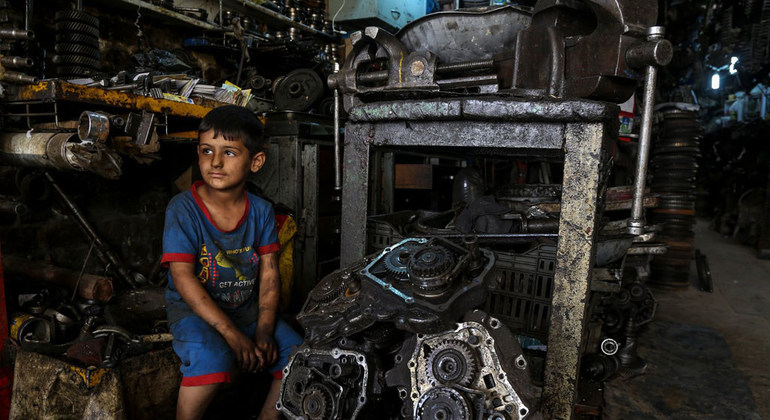In a joint report by the International Labour Organization (ILO) and UN Children’s Fund (UNICEF), data shows that although a welfare safety net exists for 35 per cent of youngsters overall, that figure drops to 28 per cent in Asia and just 16 per cent in Africa.
When Member States ratified the 2030 Agenda for Sustainable Development, agreed in 2015 with its 17 Sustainable Development Goals, they agreed to the global initiative’s top priority, namely eradicating poverty.
State benefits play vital role in preventing poverty
State benefits from public funds, in the form of cash grants, “play a vital role in breaking the vicious cycle of poverty and vulnerability”, the report insists. Of 139 countries covered by the report, on average, they spend 1.1 per cent of their wealth on children up to 14 years old.
“There is a huge underinvestment gap that needs to be covered,” said Isabel Ortiz, Director of the Social Protection Department at ILO. “The numbers worsen by region. In Africa, for instance, children represent 40 per cent of the African population overall, but only 0.6 per cent is actually invested in social protection for children.”
According to the joint ILO/UNICEF report, one in five children globally lives in extreme poverty – defined as less than $1.90 a day – and almost one in two lives in “moderate” poverty, under $3.20 a day.
Children are twice as likely as adults to live in extreme poverty, the report continues, with lack of access to education and poor nutrition among the most significant long-term impacts.
“While social protection cash transfers are vital for children, they shouldn’t stand alone,” said David Stewart, Chief of Child Poverty and Social Protection Unit at UNICEF. “They have to be combined with other services – if a child is living in a household with sufficient resources and if they don’t have access to educational health, it doesn’t make a big difference. So, it’s about combining these interventions together.”
All countries have to resources to support children
In addition to the call for governments to invest in universal health coverage and tackle other issues including child labour, the UN report maintains that such measures are not a “privilege” of wealthy States.
A number of developing countries have achieved, or nearly achieved, universal social protection, it maintains. These include Argentina, Brazil, Chile and South Africa. In Mongolia, which has also achieved universal social protection for children, austerity measures threaten these gains however.
“Recently, due to fiscal pressures from international financial institutions, they have been advising the Government to target the universal benefit, Ms. Ortiz explained. “So it’s one of these cases where fiscal consolidation or austerity short-term…may be having long-term impacts on children. So the UN message is to try to look at the longer-term.”
Improving all children’s lives ‘is an issue of political will’
“Child poverty can be reduced overnight with adequate social protection,” Ms. Ortiz said, adding that improving the lives of all children “is an issue of priorities and political will – even the poorest countries have fiscal space to extend social protection”.
Highlighting China’s success in achieving universal health and pension coverage in just four years, is an example of what can be done. The ILO official maintained that “ultimately, the extension of social protection is always about Government’s will. It is because a Government realizes about the important developmental impacts of protecting people, particularly those that are vulnerable, across the lifecycle, so in times of childhood, in old age, in times of maternity, protections are particularly needed.”



